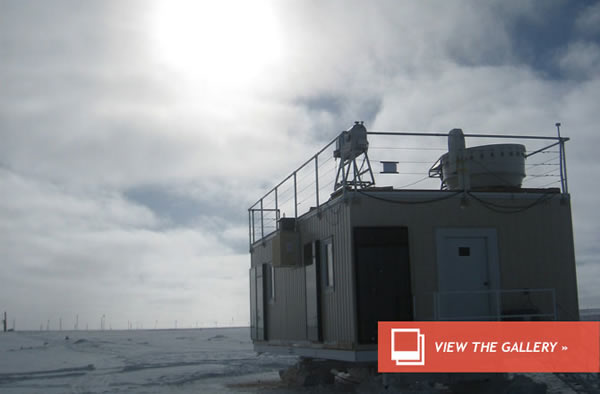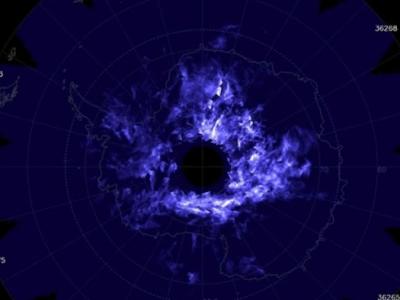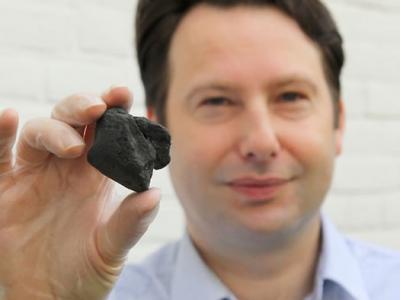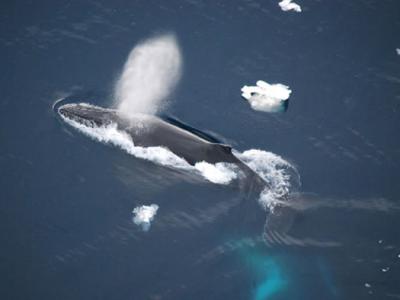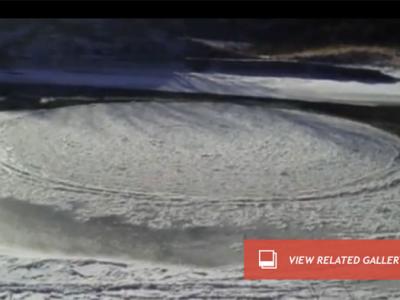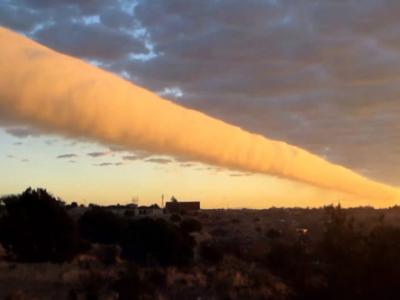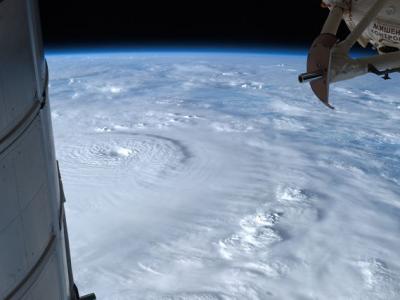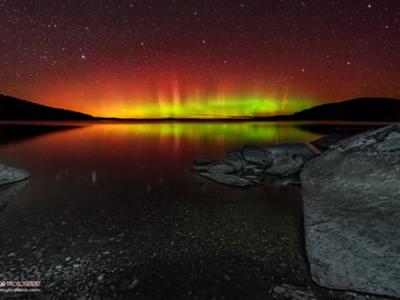Goldilocks-Like Clouds Melted Greenland Glaciers
The massive melt of Greenland’s glaciers last year resulted partly from thin, low-lying clouds that, as Goldilocks would say, were “just right:” thin enough to let the sun’s rays pass, but thick enough to trap the heat those rays produced.
More than 97 percent of Greenland’s ice cap experienced some degree of melting in 2012, even in the icy island’s frigid interior. The slushy situation resulted from a climatic combo punch, according to a study published in the journal Nature this week.
“The July 2012 ice melt was triggered by an influx of unusually warm air sweeping in from North America, but that was only one factor,” said study co-author David Turner, NOAA meteorologist, in a press release. “In our paper, we show that low-lying clouds containing a low amount of condensed water were instrumental in pushing surface air temperatures up above freezing and causing the surface ice to melt.”
Clouds act like curtains on the atmospheric window of the planet. When there are no clouds, the sun can warm the Earth, but that heat escapes and the air temperatures stay frigid. If there are thick clouds, more of the sun’s energy is bounced back into space, but heat escaping from the Earth’s surface is partly trapped. In the case of Greenland in 2012, the clouds were like sheer curtains that let the sunlight in, but kept enough of that heat inside to warm the air near the surface.
Goldilocks-Like Clouds Melted Greenland Glaciers
“Thicker cloud conditions would not have led to the same amount of surface warming,” said Matthew Shupe, research meteorologist with NOAA, in a press release. “To understand the region’s future, you’ll need to understand its clouds. Our finding has implications for the fate of ice throughout the Arctic.”
The study found that these “just right” clouds occur 30 to 50 percent of the time in the Arctic summer. The authors noted that current climate models underestimate the Goldilocks-like clouds ability to heat up the northern climate.
“Our results may help to explain some of the difficulties that current global climate models have in simulating the Arctic surface energy budget, including the contributions of clouds,” said lead author Ralf Bennartz of the University of Wisconsin-Madison, in a press release. “Above all, this study highlights the importance of continuous and detailed ground-based observations over the Greenland Ice Sheet and elsewhere. Only such detailed observations will lead to a better understanding of the processes that drive Arctic climate.”
Apr 4, 2013 08:38 AM ET by Tim Wall
